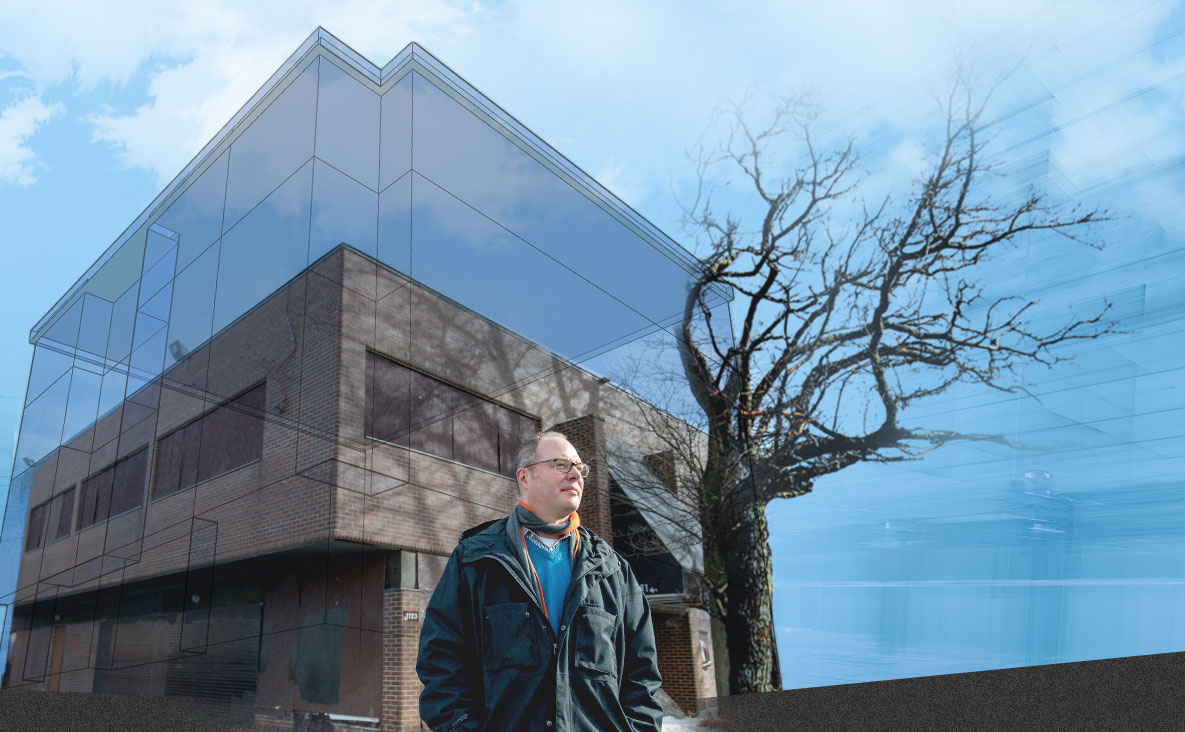Eliminating eyesores

How Ottawa can address its empty and abandoned buildings
Apathy is costing our communities
Vacant and derelict buildings tear holes in our communities. They harm our economy, reduce our safety and set us back in making our city a great place to live. And here in Ottawa, lax bylaws fail to offer many incentives to property owners to redevelop or restore their empty and boarded-up buildings.
Take, for example, 1123 Bank St. in Old Ottawa South. Fire ripped through West Coast Video in February 2009, leaving the shell of a building behind. Boarded up for more than a decade, this prime piece of real estate has been vacant ever since.
The 9,000-square-foot property is well-served by transit and set in a walkable, vibrant community. It should be a prime redevelopment site.
Had it been rebuilt after the fire, it could today be a well-loved part of the community and might have spurred other development of underbuilt, underused or vacant land nearby. At a rough guess, within the permitted 15-meter height limit, 27,000 square feet of apartments could likely have provided at least 40 homes, plus a handful of small businesses.
Consider also the former Our Lady’s School at the corner of Murray and Cumberland streets. Located in a heritage district, this site has been derelict for decades. Amid court battles in 2014, most of the building – as well as a neighboring structure – was demolished. Two of the walls were stabilized, taking over the sidewalk and creating an ongoing maintenance and safety problem for the community. Properly developed, this site could be part of the community, reflecting more than a century of the heritage of our city.
Both cases and numerous others show that our bylaws are too lax when it comes to derelict or abandoned properties.
LESSONS FROM WINNIPEG, VANCOUVER
Ottawa’s property standards bylaw addresses vacant buildings only by saying that if they are demolished, the land has to be graded level. It also requires that the building not deteriorate further and be structurally sound so that it does not fall down, and that the exterior walls be capable of withstanding winter weather and vermin.
This means that as long as the former West Coast Video building doesn’t get worse and that the boarded over windows don’t let in rain or rats, it can stay there as long as the owner keeps paying their property taxes.
By contrast, Winnipeg has a strong approach to vacant buildings. To discourage long-term boarded windows, a municipal application fee of $2,360 is required. This fee can be partially refunded if the windows are closed in with glazed windows within the year. A complete exemption can be obtained if the boarding is for construction.
As well, vacant buildings must be registered, with costs increasing in the second and subsequent years that the structure remains vacant. This encourages owners to not leave their buildings as derelict eyesores.
Consider Vancouver city council’s recent decision to expropriate two heritage properties on the Lower East Side for $1, citing the high cost of stabilizing or demolishing the properties.
Ottawa could go a step further: the city could be bold and propose an aggressive approach to making sure our communities are not left to decay:
- Require permits for buildings that have boarded up windows for more than three months, with escalating fees for annual renewal of permission. This approach allows property owners to board up windows during renovations and repairs as well as part of ongoing construction without penalty but disincentivizes long-term boarded-up openings.
- Require permits and registration for derelict properties with increasing fees for renewal; fees should escalate significantly year over year, incentivizing owners to file planning applications to renew, restore and bring buildings back to life.
- Place a cap on the number of renewals permitted. After a given amount of time, the city could expropriate the property for the stated value listed on MPAC statements. The final purchase price could be adjusted based on the cost of demolition, restoration or other factors unique to the site, determined by an independent panel of experts.
Civic leaders could then make decisions on the site that benefit the public. The West Coast Video site could be auctioned off to a developer willing to develop the site and create strong community benefits.
The city could also develop properties themselves, creating much-needed transitional housing and public outreach center, for example.
The properties could also be offered as sites for design competitions, following the model offered in Edmonton last year which saw 30 submissions compete for city-owned sites, offering missing middle housing solutions with strong public benefits.
The City of Ottawa would see infill development replace eyesores and help stimulate a design culture. Property taxes and development charges would provide a long-lasting return on investment as new residences and businesses contribute to established communities.
Our built environment not only affects and shapes our day-to-day lives. It speaks to how we live and who we are. Incentivizing the redevelopment of buildings owned by individuals who would be otherwise content to let their properties decay is an opportunity to show our civic pride and build the vibrant, walkable and diverse communities that befit a world-class city.
This article was also published in the Ottawa Business Journal.
Toon Dreessen is president of Ottawa-based Architects DCA and past-president of the Ontario Association of Architects. This article was also published in the Ottawa Business Journal. For a sample of Architects DCA’s projects, check out the firm’s portfolio at bit.ly/DCA-portfolio. Follow @ArchitectsDCA on Twitter, Facebook, LinkedIn and Instagram.